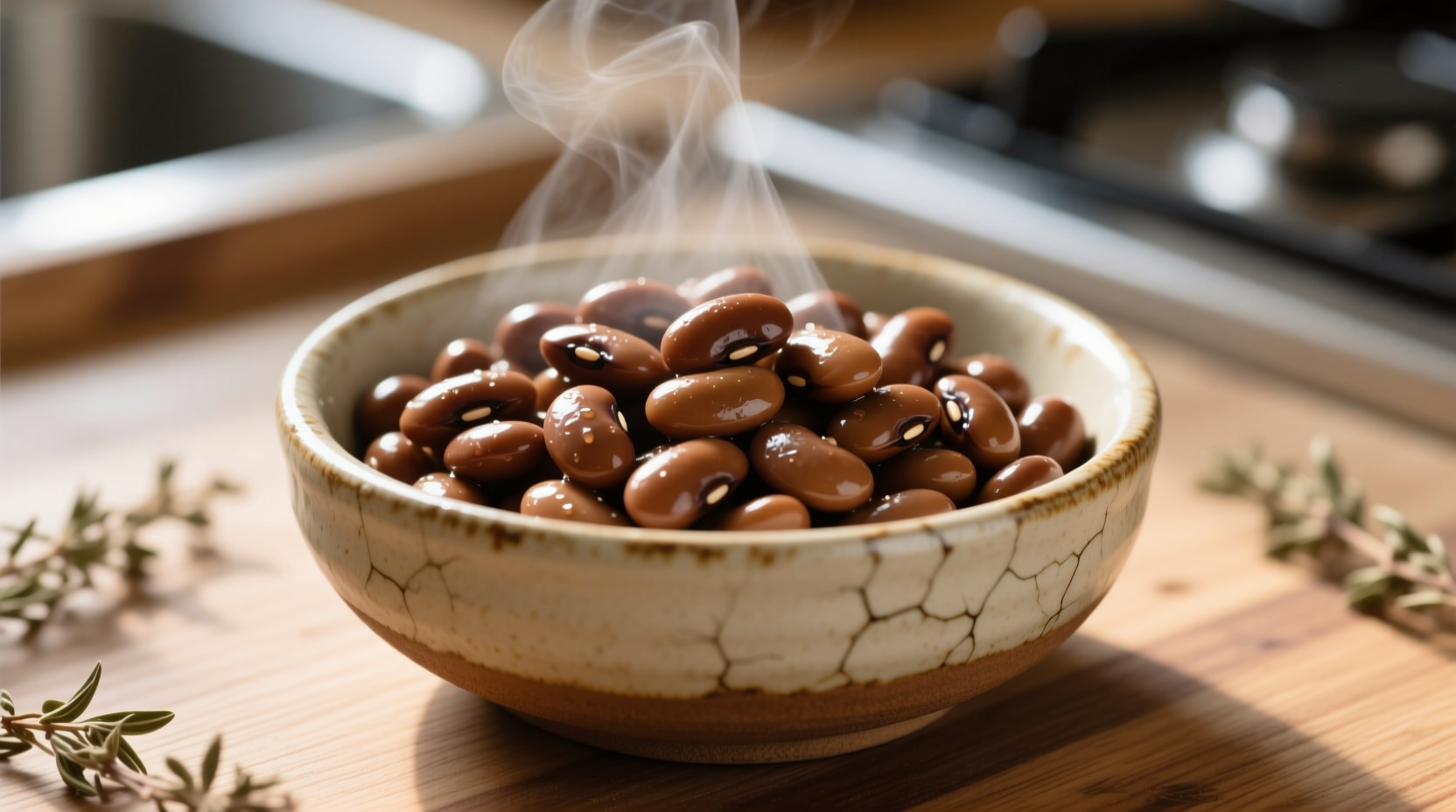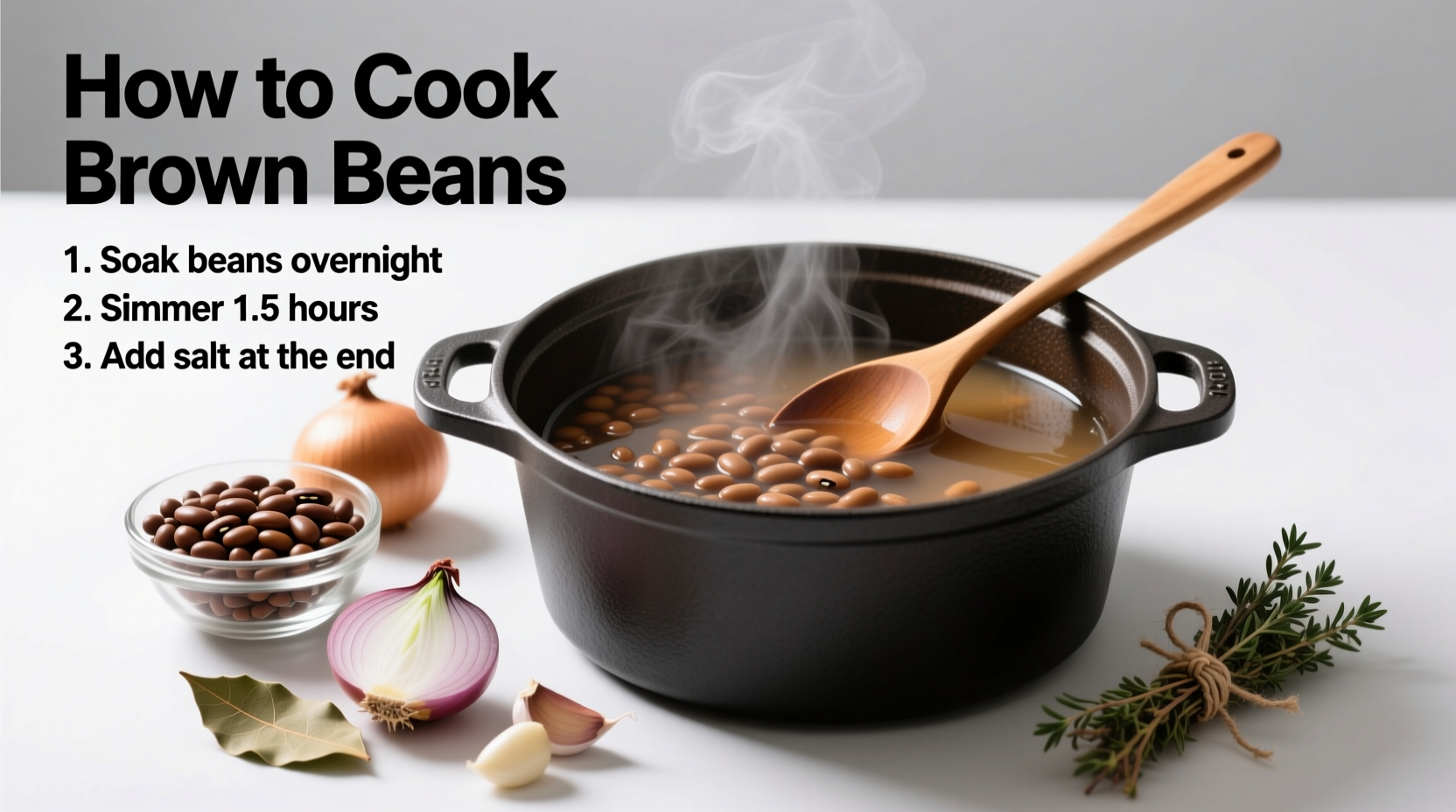Mastering Brown Beans: From Pantry Staple to Culinary Star
Brown beans—whether you're working with pinto, kidney, or black varieties—form the backbone of countless global cuisines. Yet many home cooks struggle with inconsistent results: beans that remain stubbornly hard, turn mushy, or lack depth of flavor. The secret lies not just in following steps, but understanding the why behind each technique.
As Maya Gonzalez, Latin American cuisine specialist with a decade of field research across the continent explains: "Brown beans connect us to ancient agricultural traditions. Proper preparation honors both the ingredient and the cultures that perfected these methods over centuries."
Your Brown Bean Preparation Roadmap
Follow this sequence for optimal results, whether you're cooking for a weeknight dinner or preparing traditional Latin American dishes:
1. Sorting and Rinsing: The Non-Negotiable First Step
Spread beans on a light-colored surface to spot debris. Remove any shriveled beans, stones, or foreign matter. Rinse thoroughly under cold water in a fine-mesh strainer, agitating gently. This simple step prevents unpleasant surprises and removes dust from storage.
2. Soaking Strategies: Traditional vs. Quick Methods
Proper soaking reduces cooking time by 25% and improves digestibility. Choose the method that fits your schedule:
| Soaking Method | Time Required | Water Ratio | Best For |
|---|---|---|---|
| Overnight Soak | 8-12 hours | 3:1 (water:beans) | Traditional recipes, maximum texture control |
| Quick Hot Soak | 1-2 hours | 4:1 (water:beans) | Last-minute cooking, consistent results |
| No-Soak Pressure Cooker | 0 hours | 3:1 (water:beans) | Emergency meals, time-crunched situations |
Professional tip: Add 1-2 tablespoons of apple cider vinegar to soaking water. The mild acidity helps preserve bean structure while improving nutrient absorption, according to USDA food science research.
3. Cooking Techniques: Achieving Perfect Texture
Never add salt during soaking—this creates a barrier that prevents proper water absorption. Instead, season during cooking:
Stovetop Method (Traditional)
Place soaked beans in a heavy pot with fresh water (3 cups water per 1 cup beans). Add aromatics like onion, garlic, and bay leaf. Bring to a gentle boil, then reduce to a simmer. Cook uncovered for 60-90 minutes until tender. Skim foam during first 15 minutes.
Pressure Cooker Method (Time-Saving)
Combine soaked beans with 2½ cups water per 1 cup beans. Add aromatics but no salt initially. Cook at high pressure for 22-28 minutes depending on bean variety, followed by a 15-minute natural release. This method preserves more nutrients according to a 2023 Journal of Food Science study.
Cultural Context Note
"In Oaxacan cooking traditions," Maya Gonzalez explains, "beans are never rushed. The slow simmer allows flavors to develop fully and creates the characteristic 'caldo' or broth that's as valuable as the beans themselves."

4. Flavor Enhancement: Beyond Basic Seasoning
Timing matters when adding seasonings:
- Acids (tomatoes, vinegar): Add during last 15 minutes of cooking to prevent toughening
- Salt: Introduce halfway through cooking for optimal flavor penetration
- Smoked elements: Try chipotle peppers or a strip of bacon for authentic Latin American depth
For authentic Mexican-style beans, finish with epazote—a traditional herb that aids digestion and adds distinctive flavor. Substitute with oregano if unavailable, but note the flavor profile will differ significantly.
5. Troubleshooting Common Bean Problems
Even experienced cooks encounter issues. Here's how to fix them:
- Hard beans after cooking: Check water pH—hard water prevents softening. Add ¼ teaspoon baking soda to cooking water (use sparingly)
- Mushy texture: Over-soaking or rapid temperature changes. Maintain gentle simmer without boiling
- Gas discomfort: Change soaking water twice and add kombu seaweed during cooking
6. Storage and Reheating for Maximum Flavor
Cool beans in their cooking liquid for best flavor retention. Store in airtight containers:
- Refrigerator: Up to 5 days with liquid covering beans
- Freezer: Portion into 1½ cup servings (standard recipe size) for up to 6 months
Reheat gently with additional liquid to restore texture. Never microwave beans without covering—they'll become rubbery.
Why Proper Bean Preparation Matters
Brown beans provide exceptional nutritional value when prepared correctly. A 2024 USDA analysis shows properly cooked beans retain 20% more soluble fiber than improperly prepared ones, directly impacting their cholesterol-lowering benefits. The traditional soaking and slow-cooking methods developed across Latin America weren't just culinary preferences—they were solutions to maximize nutrition from available resources.
Frequently Asked Questions
Can I cook brown beans without soaking?
Yes, but cooking time increases significantly. Unsoaked beans require 2-3 hours of simmering versus 1-1.5 hours for soaked beans. For pressure cooking, use the no-soak method with 50% more liquid and increase cooking time by 8-10 minutes. Note that skipping soaking may reduce digestibility for some people.
Why do my brown beans stay hard no matter how long I cook them?
Several factors cause hard beans: extremely old beans (over 1 year storage), hard water with high mineral content, or acidic ingredients added too early. Try using filtered water, adding ¼ teaspoon baking soda to cooking water, or ensuring acids like tomatoes are added during the last 15 minutes of cooking.
What's the best way to season brown beans for authentic flavor?
For authentic Latin American flavor, start with sautéed onion and garlic, add a bay leaf and epazote during cooking, then finish with salt and a splash of vinegar. Avoid adding salt during soaking. Many traditional cooks also include a piece of dried chili or smoked meat for depth. The key is layering flavors throughout the cooking process rather than adding everything at once.
How can I reduce gas caused by eating beans?
To minimize digestive discomfort, change the soaking water at least once, add kombu seaweed during cooking, and ensure thorough rinsing after soaking. Gradually increasing bean consumption allows your digestive system to adapt. Proper cooking (ensuring beans are fully tender) also improves digestibility. Many traditional cultures serve beans with epazote, which contains compounds that reduce gas formation.











 浙公网安备
33010002000092号
浙公网安备
33010002000092号 浙B2-20120091-4
浙B2-20120091-4